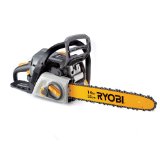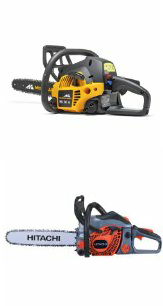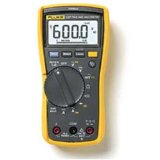



Search This Site
Search With Google
Petrol Chainsaw Advice
Moisture Meter Guide
The complete moisture meter website
The chainsaw is an expensive piece of gardening machinery and in order to protect your investment, you need to have it maintained on a regular basis. The easiest way to do this is to take it down to your local tool specialist and have them service it for you. However this can prove to be rather expensive in the long run. There are videos and DVDs that one can buy which will show you how to properly maintain a chainsaw and of course it is possible to obtain any maintenance information from the internet.
Doing your own chainsaw maintenance is a much better option economically and you also have the knowledge that the job has actually been done and you are not fobbed off with a large bill and assurances that all work has been carried out. By owning a chainsaw kind of proves that you are a hands on type of person, so the logical step is to actually maintain the chainsaw yourself.
When you get to know your machine you will soon realize that they are quite simple tools in design and structure. They have basic operations and servicing them is actually quite easy to do. We understand that carrying out your first maintenance on the chainsaw may be quite daunting, but believe us in that after the first time, every other time is just a walk in the park.
Moisture Meter Guide 2010 Contact details:garnett65@hotmail.com
The petrol chainsaw uses a spark plug. The spark plug is an electrical device that is fitted in the cylinder head of certain combustion engines. It ignites compressed fuel by the means of an electrical spark, which creates motion and hence starts your chainsaw.
Rest assured, your spark plug will wear out one day and will need to be replaced. This is simple enough to do and there is no reason why you should have it done at a repair shop. That is a complete waste of time and money. When and if your chainsaw refuses to start the first port of call is the spark plug. If you clean it or replace it and the chainsaw still refuses to start then you will know that you have a more serious issue on your hands.
To change the spark plug on a chainsaw you must first locate the spark plug hatch and then remove it. Take a ¾ inch deep well socket and remove the spark plug. Take a new spark plug and place it in correctly and tighten it. Replace the spark plug hatch and then you are ready to go. It’s as simple as that. And what is surprising is how many people do not do this when their chainsaw refuses to start.
There are so many cases where just replacing the spark plug will solve the starting problems.
The chainsaw will always create it’s own dusty environment through the work that it performs. Because of this the chainsaw will suck a lot of dust in making the air filter work very hard for it’s living. A blocked air filter on the chainsaw can lead to some serious problems so you need to clean the air filter on a regular basis.
We here actually clean the air filter after every use with the chainsaw. You may think that is is perhaps a little excessive, but we have never had any air filter or related problems with any of our chainsaws over the last 10 years. And you know what they say “always stick with what you know best”. It works for us and we would always recommend that method to anyone.
Chainsaws are predominantly powered by 2 stroke engines. In order to run correctly they require a fuel and oil mix which must be mixed to the correct ratios which depends on the particular petrol chainsaw that you own. On the fuel front as well it is imperative that you keep the fuel free from moisture and any pollutants. When the chainsaw is put through it’s paces with a long session the fuel filter may become clogged. If so your chainsaw will struggle from irregular fuel flow. So this filter needs to be cleaned once in a while and replaced if necessary.
Continual checking up off the chainsaw chain is essential. You want and need it to be sharp at all times for optimum performance. Check the teeth and look for any bends or crimps in the chain itself. Chain tension is vital as well. Too loose or too tight and you will have problems. So set the correct chain tension and before use ensure that this tension is achieved. The chain sits on a chain bar and you need to always check to ensure that all bolts on it are tight Chainsaw vibration can loosen them over time. Also with the chain and bar ensure that the oil levels are sufficient for lubrication. If not you will start to produce smoke when cutting with the chainsaw.
Air Filter
Using a chainsaw can be very dusty work and your chainsaw will suck all this dust in. So you need to keep your air filter clean. The best way to do this is after each use. Take the chainsaw to a dry place and clean it before opening the body to get to the air filter. Take the air filter out and use compressed air to blow away all the dust and debris. You could also wash the air filter depending upon the actual type it is. If the air filter does not clean up well then you should replace it. With heavy use the air filter should be replaced every 2 weeks or so. The chainsaw relies upon a steady air flow of air to maintain proper combustion and cooling features. A blocked air filter can cause a chainsaw to overheat.
Spark Plug
To Care Is To Share
2 Stroke Engine
Invariably the petrol chainsaw is powered by a small, compact 2 stroke engine. This proves to be successful because of the power to weight ratio that they create and the fact that they are small and light. This makes them ideal for any hand held power tools such as the strimmer or chainsaw. The 2 stroke engine is an internal combustion engine that completes the thermdynamic cycle with just 2 movements of the piston. Hence “2 stoke”.
As with all engines, the 2 stroke is no exception and requires lubrication for it
to run properly and smoothly. But the significant factor concerning the 2 stroke
engine is that it does not use regular sump lubrication. This is because the crankcase
is actually used to pump a fuel and air mixture in to the cylinder. So in order to
lubricate any moving parts within the engine, oil has to be added to the fuel. This
oil will then flow through the system with the fuel and lubricate as it passes. Generally
the fuel/oil mix is about 20-
Daily Maintenance Tips
The throttle trigger on a petrol chainsaw can be susceptible to sticking. Check the trigger to make sure that it operates smoothly. If you find that it sticks, does not operate smoothly or that the chainsaw will not return to idle speed when it is released you should take the chainsaw to your dealer to look at it.
The chain brake needs to be cleaned after every use and ensured that it functions properly. The chain catcher as well must remain undamaged. If damaged replace it immediately.
Clean or replace the air filter.
Turn the bar daily to give you even wear. Clean the bar groove and make sure the lubrication hole is not blocked.
Sharpen the chain and check the chain tension. It is also a good idea to take a look at the drive sprocket. If it is worn then you must replace it.
Check over the whole chainsaw for any loose nuts or screws. Tighten up accordingly.
See if the starter and starter cord show any signs of wear and tear.

Chainsaw Chain And Bar
The chain of the chainsaw is critical to it’s working purpose. Regular use of the chainsaw and allowing the chain to come in to contact with wood and soil will eventually blunt it or dull it. You need to keep the chain sharp by sharpening it whenever is necessary. After use as well the tension of the chain may well alter. So you need to always be wary of having the correct chain tension. How to set the chain tension will differ on different models of the chainsaw. So familiarize yourself with the instruction manual for your particular chainsaw.
One must check the chain bar on a regular basis. A good routine to adopt is to rotate it after every 10 hours or so of use. When the chainsaw is in operation the chain will wear more at the bottom with the chain bar. By rotating the chain bar you are effectively changing the top and bottom positions of the chain. Before using a chainsaw it is a good idea to clear the chain bar of any muck or debris allowing a free flowing chain.
The chain bar and chain requires separate lubrication. Chain oil is depleted very quickly because it is thrown off by the chain and soaked up by sawdust. You need to always keep an eye on the chain oil reservoir to ensure that it is correctly topped up at all times. A good method to have is to always fill the chain oil reservoir up at the same time as you fuel up the chainsaw. In most chainsaws the chain oil reservoir will outlast the fuel tank. Oil must be allowed to reach the chain at all times so make sure that there is no sawdust or twigs blocking the holes. They need to be clean and free so that the oil can flow freely.
Weekly Maintenance Tips
Check all the AV elements to ensure that they are not soft or torn.
The drum bearing on the clutch will need to be lubricated.
Go over the bar and if there are any burns on the sides then you must file them off.
Take out the spark plug and give it a good clean. When putting it back ensure that the gap is at the correct level. The correct gap is 0.5 mm.
The recoil spring on the starter is quite delicate. Check this weekly. Also clean the fins on the flywheel when you are doing this.
The cooling fins on the cylinder have a habit of catching dirt. So clean them.
There is a screen to the exhaust which will get dirty and clogged after a weeks work. So clean or replace if necessary.
Clean the carburettor body and air box of any muck or debris.
Monthly Maintenance Tips
Now is the time to always check the brake band on the petrol chainsaw chain brake for any wear and tear.
Give the clutch a good look at. Here you need to be checking the clutch centre, the clutch drum and the clutch spring for any excessive wear.
The outside of the carburettor needs to be cleaned.
You must take a look at the fuel filter. If it is clogged up then try to clean it. If you cannot clean it then fit a new one to the chainsaw.
Its good to ensure that you always have clean fuel running through the chainsaw. So clean out the inside of the fuel tank on a monthly basis.
Do the same with the oil reservoir as well.
Go over the complete petrol chainsaw and look at all the cables and connections. Ensure they are all as they should be. Rectify if not.
Storing A Petrol Chainsaw
The storing of your chainsaw is an important factor within chainsaw maintenance. It needs to be done correctly to ensure optimum performance from your chainsaw when you bring it out of storage to work again.
It is recommended that if you are not going to be using your chainsaw for 30 days or more then you should follow procedures and store the unit correctly. This will limit any damage to your saw. So to store a chainsaw you first need to remove any fuel from it. Drain the fuel tank and then start the chainsaw and let it run until it cuts out automatically. This means that any fuel in the fuel lines and carburretor has been used up.
After removing all the fuel from the chainsaw system, the next step is to remove any oil. Remove all oil from the chain and bar and deplete the oil reservoir. Once done you can remove the chain and bar from the body of the chainsaw.
The chain needs to be kept in an air tight container that is full of oil. So find yourself a container, fill it with oil and submerge the chain in the oil. Once done seal it and store in a safe place. With the bar you will cover it in oil and then wrap it in paper.
The body of the chainsaw needs to be thoroughly cleaned and dried. Then clean all the insides of the chainsaw. After cleaning, remove the spark plug and apply a rust inhibitor in to the combustion chamber. Place the chainsaw in an out of the way place and then the nest time you wish to work with your chainsaw, set it up properly and you will find that it is in excellent condition and working to it’s optimum level.
| Tramex Moisture Encounter Plus |
| Tramex Compact Wood Moisture Meter |
| Tramex Concrete Encounter Moisture Meter |
| Tramex Skipper Plus Moisture Meter |
| Tramex Roof And Wall Moisture Scanner |
| Sonin Digital Moisture Meter model 50218 |
| Sonin Digital Moisture Meter 270 model 50270 |
| Sonin Moisture Test Tool model 50210 |
| Sonin Moisture Test Meter Model 50211 |
| Oak |
| Douglas Fir |
| Beech Tree |
| Elm Tree |
| Hickory Tree |
| Maple Tree |
| Pine Tree |
| Prevent And Repair Gaps In Wooden Floorboards |
| How To Fix A Squeaky Hardwood Floor |
| How To Repair A Hardwood Floor That Has Buckled |
| Which Is The Best Firewood? |
| Concrete |
| Concrete Moisture |
| Screed Moisture Meter |
| SDS Drill |
| Belle Cement Mixer |
| SDS Drill Advice |
| Which SDS Drill |
| SDS Drill Accessories |
| Drilling Into Concrete |
| Kennedy Tool Box |
| Moisture - Basic Facts |
| Types Of Damp |
| Wet Rot |
| Dry Rot |
| Mold |
| Water Leak Detection |
| Stucco Moisture |
| Water Damage |
| Moisture And Rust |
| Moisture Damage To A Chimney |
| Wallpaper Stripper |
| Plaster Mixer |
| Why Worry About Moisture Problems |
| Does Your Home Have A Moisture Problem? |
| How To Solve Moisture Problems |
| How To Use Anti Mold Paint |
| Rising Damp |
| Condensation |
| Salt Damp |
| How To Avoid Bathroom Condensation |
| How To Remove Black Mold |
| How To Prevent Bathroom Mold |
| Soldering Kit |
| Soldering Kit Contents |
| Soldering Kit Advice |
| Bonsai Tree Classification |
| Growing Bonsai From Seed |
| Bonsai Tree Care |
| Bonsai Tree Training |
| Bonsai Tools |
| Displaying Bonsai |
| Bonsai Calendar |
| Bonsai Plants |
| The Thirsty Light Curve Moisture Meter |
| The Thirsty Light Ladybird Moisture Meter |
| The Thirsty Light Bumble Bee Moisture Meter |
| The Thirsty Light Butterfly Moisture Meter |
| Hanna Instruments |
| Agratronix Portable Coffee Moisture Tester |
| Lawn Aerator |
| Lawn Roller |
| Lawn Rake |
| Lawn Sand |
| Chainshot |
| Chainsaw Gloves |
| Chainsaw Trousers |
| Chainsaw Boots |
| Mac 4 - 20 XT Chainsaw |
| Mac 738 Chainsaw |
| Mac 842 Chainsaw |
| Mac 20X Power Chainsaw |
| Einhell BG-PC 3735 Chainsaw |
| Einhell BG-PC 4040 Chainsaw |
| Einhell BG-PC 5045 Chainsaw |
| Poulan P3314 Chainsaw |
| Poulan P4018 Chainsaw |
| Poulan Pro PP3816AV Chainsaw |
| Poulan Pro PP4218AVX Chainsaw |
| Poulan Pro PP4620AVX Chainsaw |
| Efco MT 4100 SP Chainsaw |
| Efco MT 3500 Chainsaw |
| Efco 132 S Chainsaw |
| Efco 147 Chainsaw |
| Efco 152 Chainsaw |
| Efco MT 7200 Chainsaw |
| Efco MT 8200 Chainsaw |
| Efco MT 3750 Chainsaw |
| Methods Of Obtaining Soil Moisture Levels |
| Hygrometer |
| Psychrometer |
| Rain Gauge |
| Wave Ventilation System |
| Humidity |
| Hygrometer For Keeping Reptiles |
| Humidor |
| Weather Stations |
| Musical Instrument Storage |